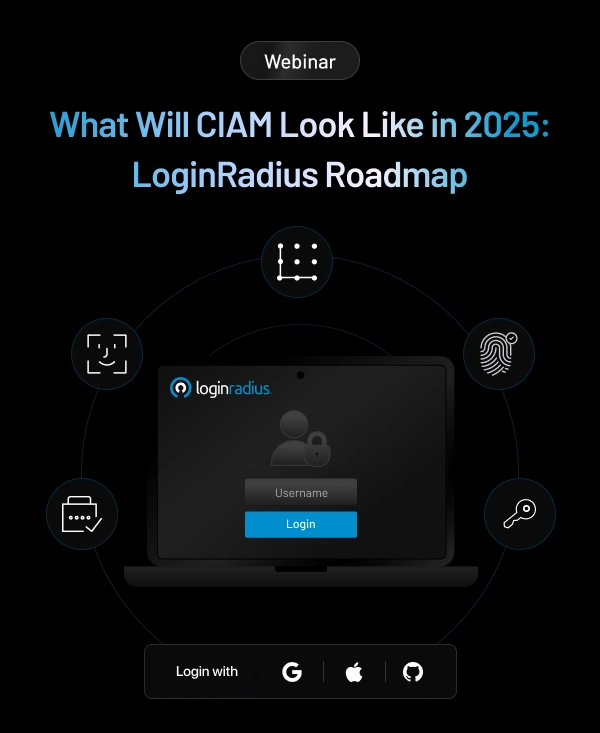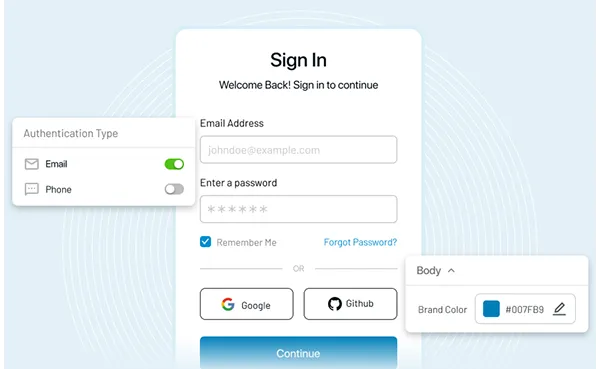Introduction
If you are like any other marketers in the digital world, you might have grown all too reliant on third-party cookies. However, increasing customer concerns around data privacy have driven tech giants to initiate steps to eliminate their use. Google has announced plans to phase out third-party cookies by 2024, followed by Apple, Mozilla, and Microsoft, which are taking a similar stance.
From the consumer's perspective, the end of third-party cookies is a good initiative. However, the concept might feel different when you own the marketer’s hat. Since third-party cookies have been the lifelines for advertising, marketers are now struggling with significant implications. The good news is your marketing can still thrive at its best in the cookieless world.
But how can you shift your data management strategy to create a unified customer profile? It could be done through identity resolution. Here’s how the promising formula of CDP and CIAM comes into the picture!
Understanding the Fundamentals of Customer Data Platform (CDP)
According to a recent McKinsey research, 76% of consumers have changed their way of shopping in a post-pandemic world. Marketers have noted the CDP era while the world is saying goodbye to cookies. The CDP helps marketers to meet evolving customer expectations, build trust, and grow to new heights.
A CDP (Customer data platform) is a type of packaged software that combines data from multiple tools to create a unified, persistent customer database containing data on all interactions related to your service or product.
Marketers have long coveted 360-degree customer profiles to deliver hyper-personalized customer experiences. CDPs are the latest solution to unlock marketing automation as they build a consistent and unified profile through strategically collected data. The platform pulls data from various touchpoints (transactional history, customer service interaction, and more), organizes the data, and combines them into a single yet impactful view.
CDP collects different types of data, including:
- Personal data – including name, contact details, demographics, and job information.
- Engagement data – including social media interactions, email open rates, customer service interactions, and paid ad conversions.
- Behavioral data – Including transaction details, subscription info, customer loyalty program, and cart account details.
- Altitudinal data – including customer feedback and more.
Now, a CDP assists various departments, including finance, IT, retail operations, merchandise, and more. However, the marketing executives can reap the biggest benefits from the technology.
How does Customer Identity Access Management (CIAM) Help in cookieless marketing?
While cookies have been crumbling and heavily altering the digital landscape, marketers now have multiple questions when creating campaigns. They must find new ways to target their audience and adjust to the new landscape while improving the customer experience.
To stay ahead of the emerging issue without violating customers' privacy rights, LoginRadius’s CIAM solution solves this unique solution by preparing professionals for a cookieless sphere. Here’s how CIAM helps.
- Consolidating customer data - The CIAM platform gathers and centralized customer data from different viewpoints, like website visits, mobile apps, and interactions across various channels. It helps the marketers to understand the audience in a better way in the absence of third-party cookies.
- Identity resolution - Robust CIAM solutions employ sophisticated identity resolution techniques to accurately identify individuals across different devices and platforms. Marketers can understand customers' identities and preferences with first-party data and authentication methods.
- Data security and compliance - CIAM solutions are instrumental in building data security plans and allow marketers to keep up with regulations for ethical data management and create trust with their audience.
- Personalized marketing - Marketers utilize the first-party data and insights from CIAM to build rich customer profiles and customized marketing campaigns.
- Audience segmentation and targeting - With CIAM's first-party data, marketers can segment their audience and tailor the marketing strategy based on demographics, behaviors, and preferences.
- Measurement and analytics - CIAM tools often come with built-in reporting and analytics tools that provide valuable insights into customer interaction and campaign performance. Marketers can gauge the effectiveness of cookieless marketing initiatives by keeping a tab on engagement and conversion rates.
CDP + CIAM - Perfect Tool for Marketers in Cookieless Marketing
With multiple marketing channels to be activated and ever-growing competing and fragmented buying paths, brands need to do their best to stand out in the domain. However, the corresponding and crucial customer data required to drive effective marketing is often divided across silos.
Now, how do you strike a balance between privacy and security measures while delivering a personalized customer experience? - The combination of CDP and CIAM!
The type of joined-up, data-driven strategy serves as a critical component across the marketer's entire business, as it helps enterprises to support and manage both online and offline customer relationship building, sales, and border operations – all for better engagement, long-term loyalty, and ultimately – profitability.
Here’s how marketing professionals benefit from CDP and CIAM:
1. Matching known data with anonymous data
The perfect combination of CDP and CIAM lets you connect customer behavior when the specific identifier alters. For instance, when the customer replaces their device, you can attach them to a personal identifier, allowing for a better customer experience.
2. Build on first-party data
The identity graphs encompass information about a particular customer. With the elimination of third-party cookies, marketers have been opting for first and second-party data to build such distinctive data pictures.
3. Data integration across the enterprise
Marketers can also integrate various information, including demographics, purchase data, lifestyle, and more, using CDP and CIAM solutions. The data can create a customer identity that enables targeted marketing campaigns for exclusive customers.
4. Remain compliant with regulations
Data privacy is another benefit of employing the CDP and CIAM strategy. It allows customers to share their data without violating customer privacy, remaining compliant with privacy regulations.
5. Create accurate predictive models
An additional benefit in choosing CDP and CIAM solutions is their ability to allow marketers to make more precise predictive modeling. With automated modeling, you can correlate with hundreds of profile attributes to prove the most meaningful features.
Choosing the Right CIAM Platform
Cookieless Future will help marketers focus on more important and sustainable marketing approaches, including brand marketing, personalization, and contextual marketing through robust CIAM solutions. But how can you choose the right platform that suits your needs? Let’s find out!
- Ensure the CIAM platform is designed to scale, flex, and align with your growing user base and expectations.
- It should minimize the friction in customer onboarding by facilitating friction-free social login, registration, single sign-on (SSO), and step-up authentication.
- The CIAM platform should provide a consistent 360-degree picture of your customers across all devices, channels, and marketing campaigns.
- Choose a cloud-based CIAM solution with a scale-on-demand feature to offer high efficiency and optimization.
- Look for a CIAM platform with a unified database to eliminate data silos and provide a single and consistent view of customers across the entire business ecosystem.
- Ensure the CIAM solution provides comprehensive customer insights, market intelligence, and reporting.
- Another important thing to remember is that the CIAM solution should be ISO and GDPR-compliant and have a clean SOC 2 report to withstand the challenges of denial-of-service attacks (DoS) and other frauds.
Wrapping Up!
Complementing each other, CDP and CIAM help brands identify the customer across every touchpoint while leveraging useful data associated with their identity. This combined approach to data management assures better recommendations and provides real prerequisites for true personalization.
Simply put, the ban on third-party cookies will inevitably affect marketers. However, the changes don't have to be too drastic. The blended approach of CDP and CIAM will give you the power to bridge the gaps and boost your marketing strategies in the cookieless world.

















